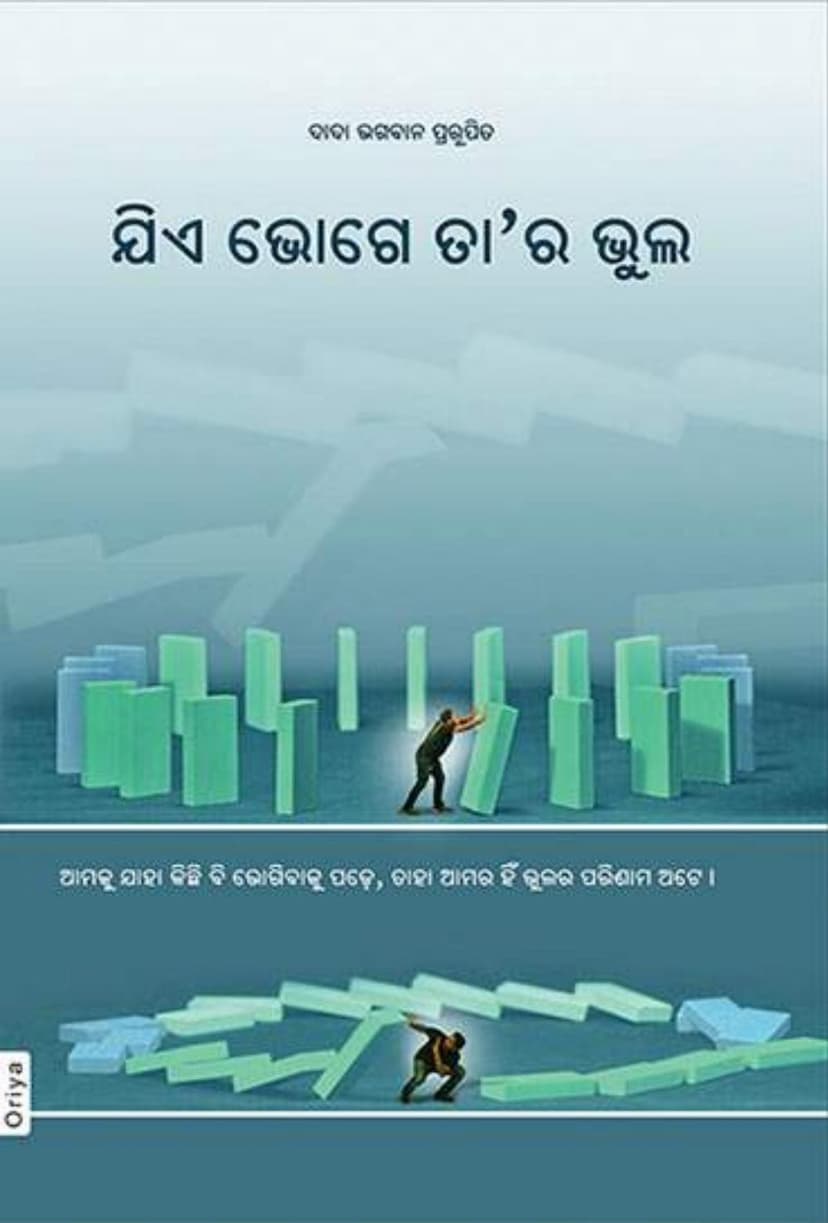Fault Is Of The Sufferer Oriya
Added to library: September 1, 2025

Summary
Here is a comprehensive summary of the Jain text "Fault Is Of The Sufferer" by Dada Bhagwan:
The book "Fault Is Of The Sufferer" (Oriya title: "ଯିଏ ଭୋଗେ ତା’ର ଭୁଲ") by Dada Bhagwan, published by Dada Bhagwan Aradhana Trust, presents a profound principle of Jain philosophy: "He who suffers, it is his fault." This core tenet is explained and elaborated upon throughout the text, aiming to shift the understanding of suffering and its origins from external causes to internal responsibility.
Core Principle: "He Who Suffers, It Is His Fault"
The central message of the book is that any suffering, hardship, or difficulty encountered in life is a direct consequence of one's own past actions and mistakes. It asserts that the universe operates under a just and natural law where suffering is not inflicted arbitrarily but is a result of karmic accounts being settled.
Key Concepts and Explanations:
- The Law of Karma: The book emphasizes that every experience, whether pleasant or unpleasant, is a result of one's own karma. The principle "Who suffers, it is his fault" is presented as the fundamental law governing the karmic world.
- Internal Responsibility: Instead of blaming others or external circumstances for one's suffering, the text urges individuals to look within and acknowledge their own role. The suffering itself serves as evidence of a preceding fault.
- The Universe as a Just System: The text portrays the universe as a perfectly just system where no action goes unnoticed or unaddressed. It states that the universe is always in accordance with justice. The difficulty arises when our self-centered perspective prevents us from seeing this underlying justice.
- The Nature of Fault: The book clarifies that fault is not about assigning blame in a conventional sense but understanding the causal link between an action (or inaction) and its consequence (suffering).
- Distinguishing Law: It differentiates between societal laws and the laws of nature or God. While societal laws might focus on the wrongdoer, the natural law focuses on the one who suffers the consequence.
- Beyond Tolerance: Resolution through Knowledge: The book contrasts the limited nature of tolerance with the liberating power of knowledge. True resolution comes from understanding the root cause of suffering, which is one's own fault, rather than merely enduring it.
- The True Judge: The internal judge, coupled with the internal lawyer (self-justification), often masks the fault. The text encourages recognizing the inner self that points out one's own errors.
- The Role of Intent: While external actions might seem like the cause of suffering, the underlying internal fault is the primary driver. When one's ego or self-identity is involved, suffering arises from one's own actions.
- Dada Bhagwan's Guidance: The teachings are attributed to Dada Bhagwan (Shri Ambalal M. Patel), who experienced self-realization and conveyed profound spiritual insights. He explained that "Dada Bhagwan" is the pure soul within, not the physical body.
- The "Akram" Path: The book alludes to Dada Bhagwan's teachings on the "Akram" (effortless) path, which offers a shortcut to self-realization, unlike the gradual "kram" path.
- Practical Examples: The text uses numerous relatable examples, such as a broken teacup, marital disputes, parent-child conflicts, and even road accidents, to illustrate the principle. In each case, it guides the reader to identify who is suffering and, therefore, whose fault it is.
- The Nature of Accidents: Accidents are explained not as random occurrences but as the culmination of a person's own karmic accounts, where the "instrument" or "nimitta" (e.g., the driver, the falling stone) plays a role but the ultimate fault lies with the one who experiences the suffering.
- Consequences of Blame: The book warns that blaming others only creates new karmic accounts and perpetuates suffering. Accepting the fault, on the other hand, helps in resolving existing karma and moving towards liberation.
- Knowledge vs. Intellect: The text distinguishes between knowledge ("gnan"), which leads to a state of unaffectedness, and intellect ("buddhi"), which can lead to emotional entanglement and further suffering.
- The Goal of Liberation: By understanding and internalizing the principle "He who suffers, it is his fault," individuals can gradually purify themselves, resolve their karmic debts, and ultimately attain liberation (moksha).
In essence, "Fault Is Of The Sufferer" is a guide to self-awareness and personal responsibility in the spiritual journey. It empowers individuals by revealing that they hold the key to their own happiness and freedom from suffering by understanding and rectifying their own internal faults. The book encourages a profound shift in perspective, leading to peace, understanding, and spiritual progress.